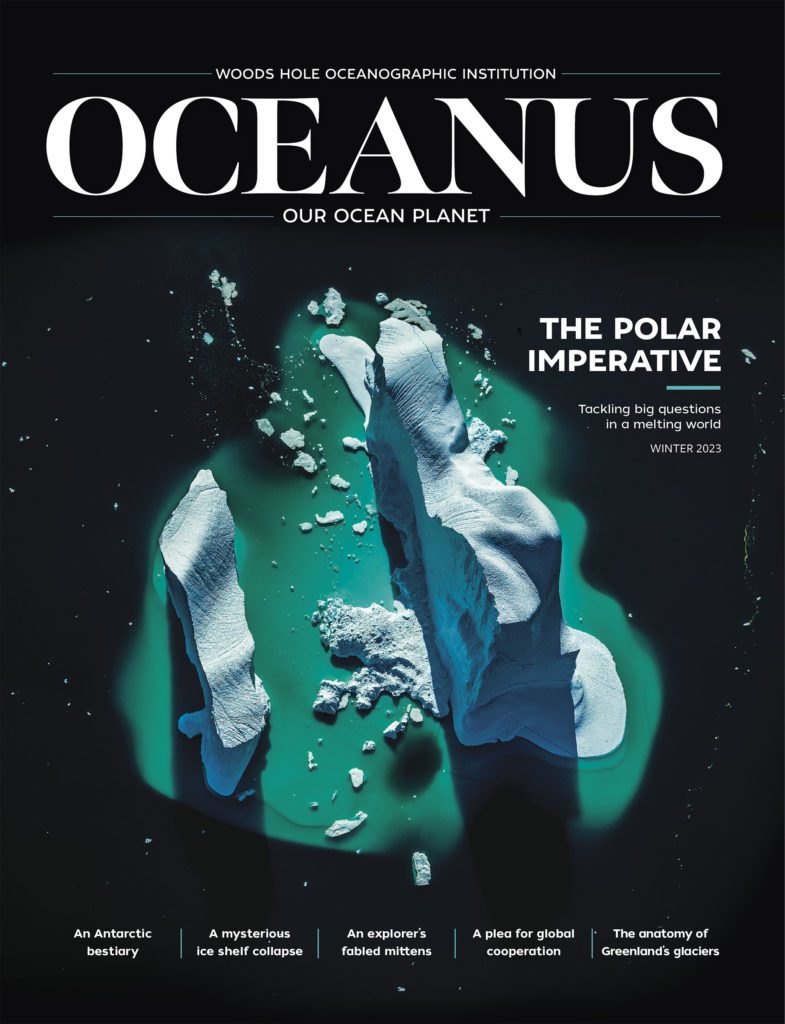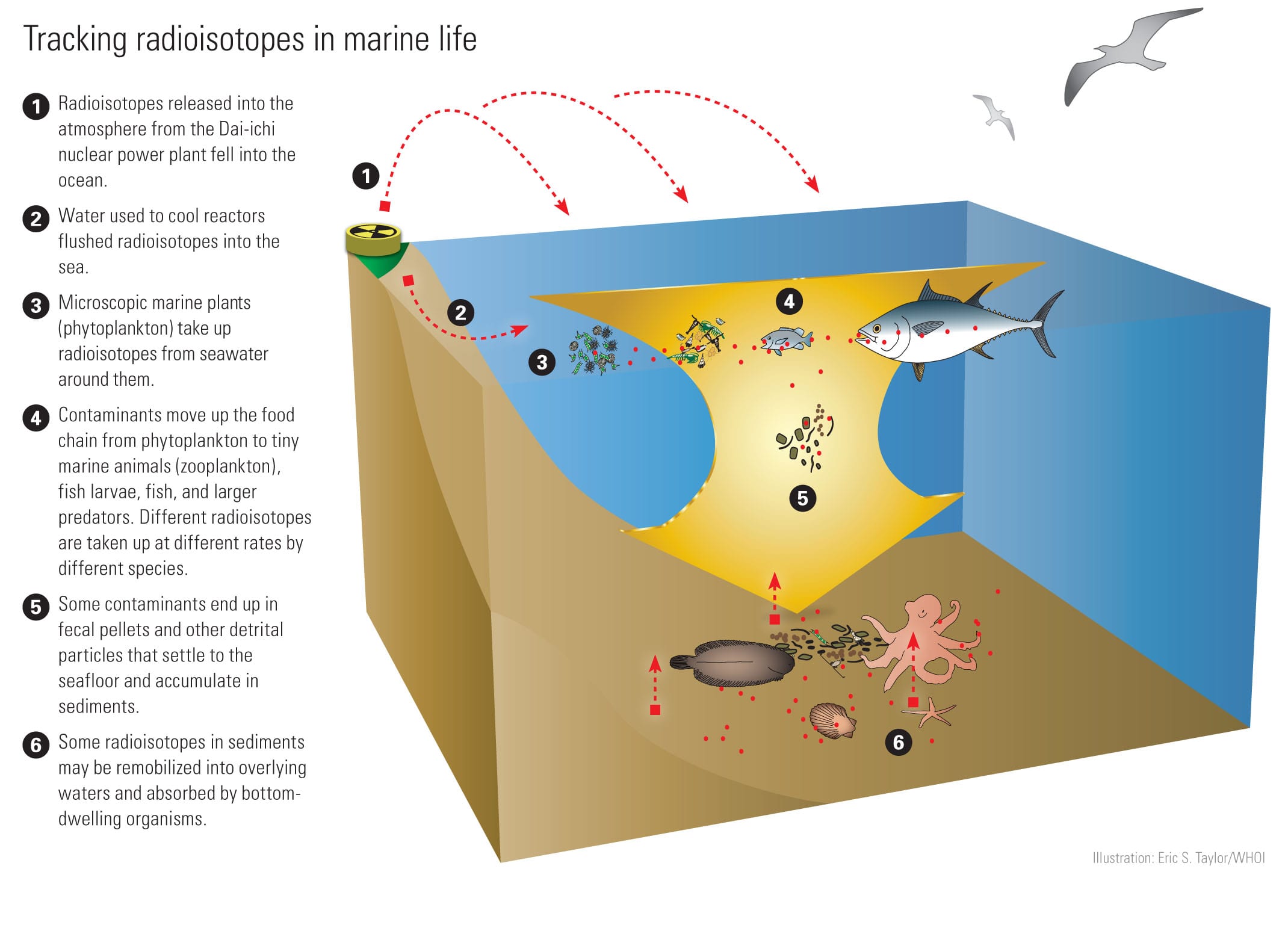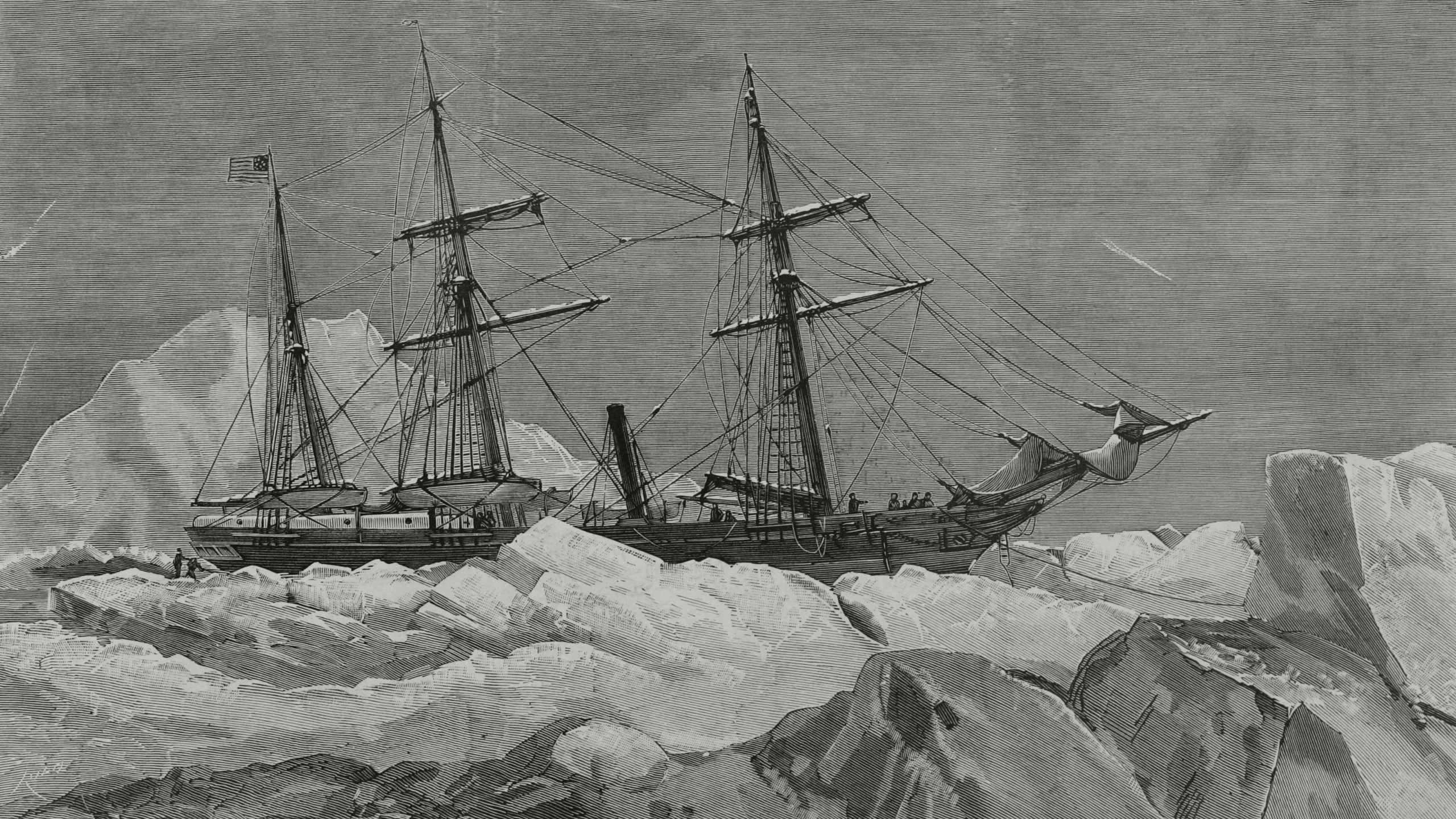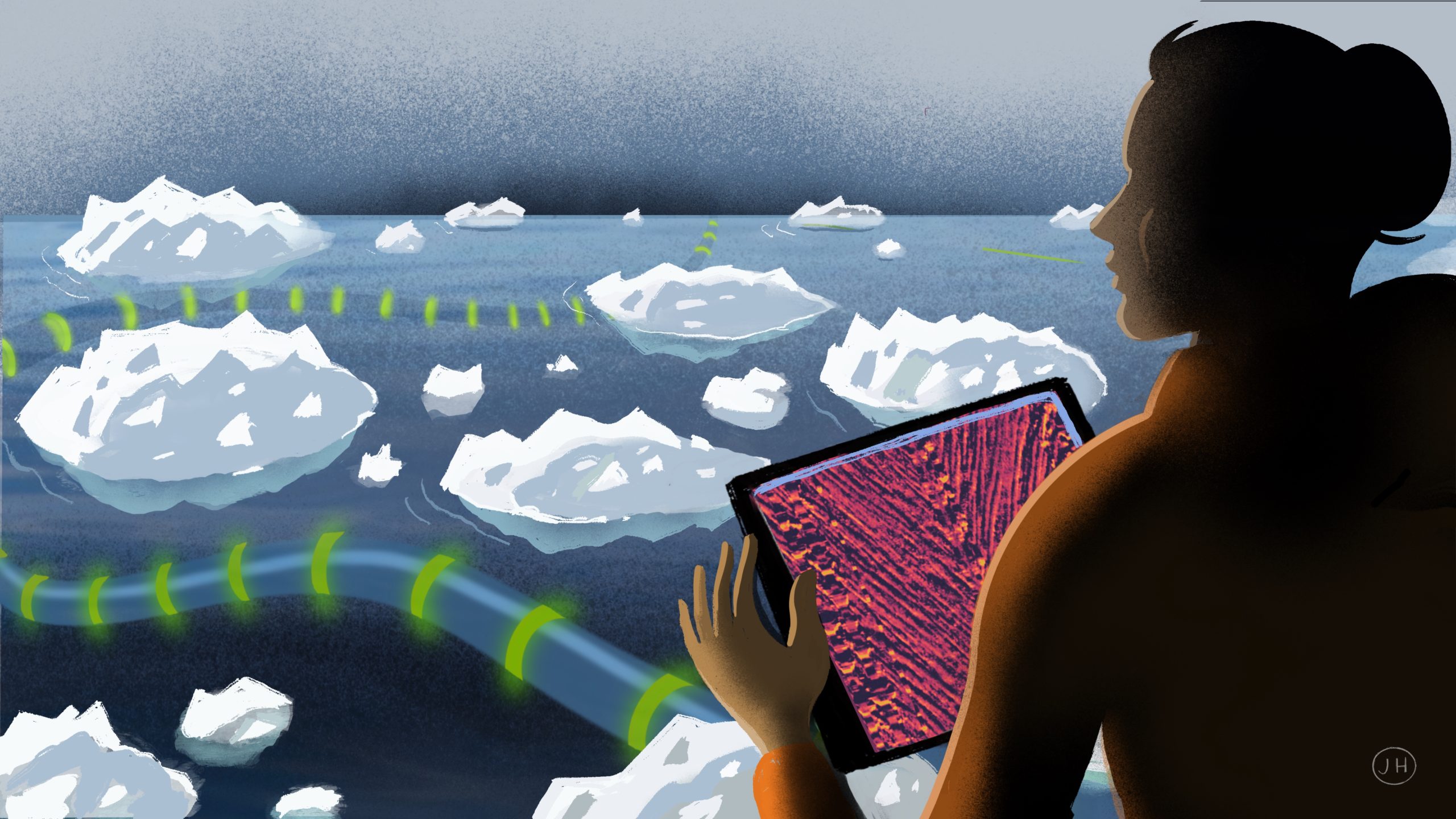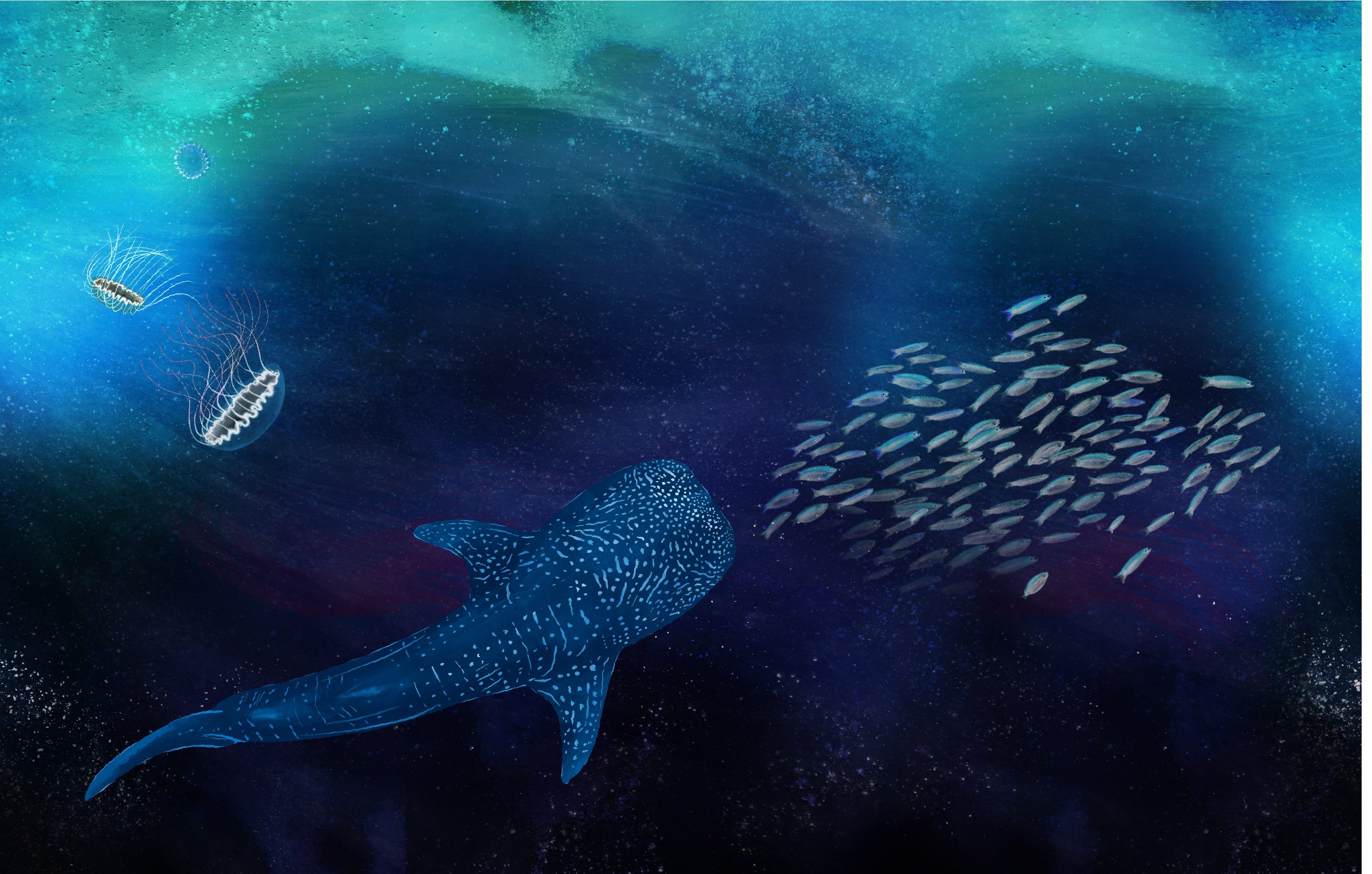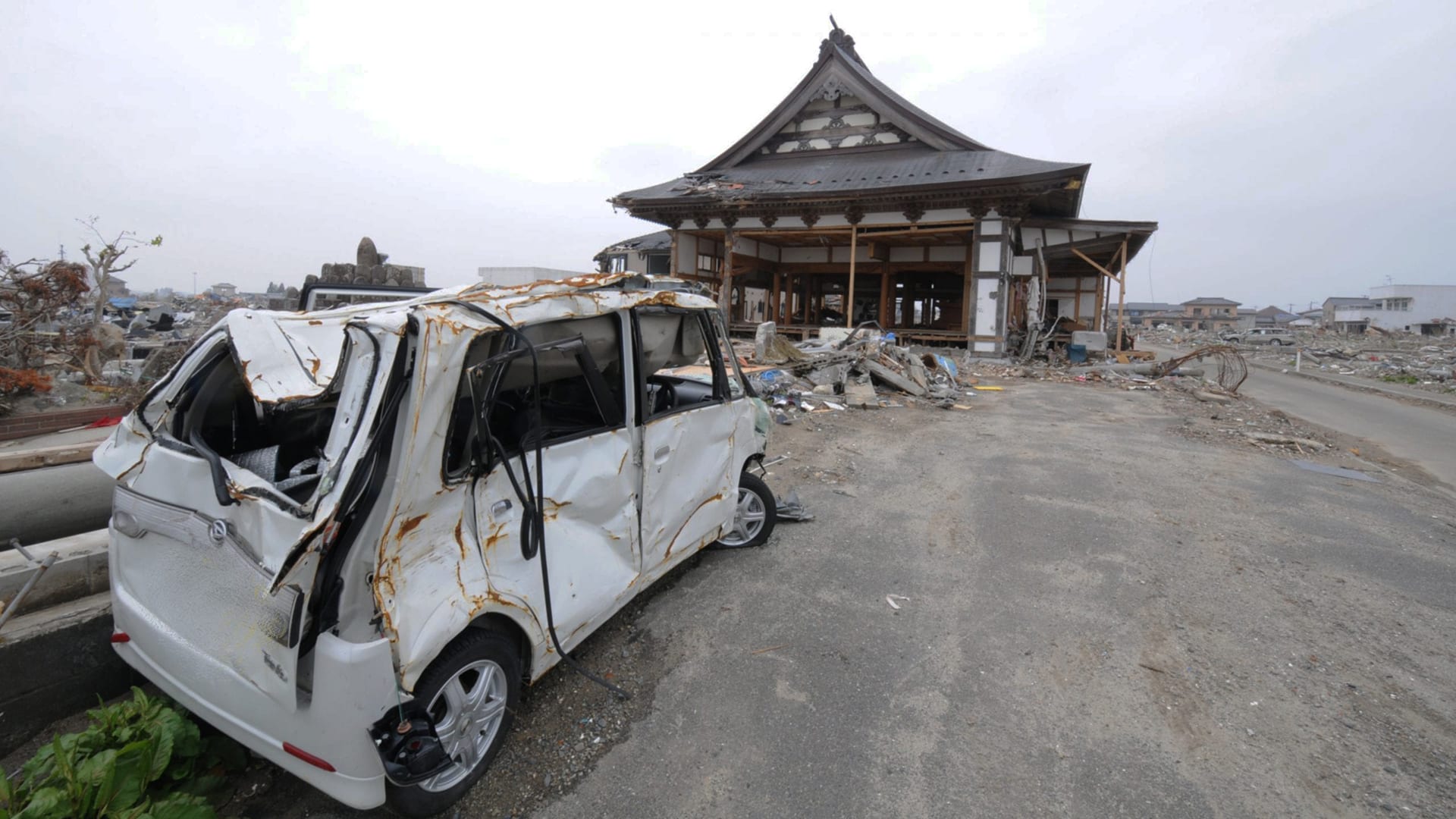
Fukushima and the Ocean: A decade of disaster response
One decade since explosions rocked Japan’s Fukushima Dai-ichi nuclear power plant, researchers look back at how the ocean was impacted by the radioactivity fallout from the event, and discuss how the situation continues to evolve.
Estimated reading time: 13 minutes
On March 11, 2011, a magnitude 9 earthquake 80 miles east of the Japanese city of Sendai generated a towering tsunami that slammed into the coastline and critically damaged the Fukushima Dai-ichi nuclear power plant. Nearly 16,000 people died and the releases of radioactive water from the plant continue today. (Photo by Ken Kostel, © Woods Hole Oceanographic Institution)
Japan experiences hundreds of earthquakes every year, but the Great Tohoku Earthquake was the most powerful the country had ever recorded. The 9.0-magnitude quake lasted as long as six minutes and shifted the main island eight feet to the east.
Tsunami waves, generated as the seafloor thrust upwards, hit the closest parts of the Japanese coastline less than half an hour later. Entire towns were destroyed by the three-story wall of water and nearly 16,000 people were killed.
The Fukushima Dai-ichi nuclear power plant had also been damaged. In the following days, explosions rocked the facility and more than 150,000 people were forced to evacuate the surrounding area to avoid potential radioactive fallout. Even more radioactivity was washed into the ocean or deposited there from the atmosphere.
"Fukushima Dai-ichi was an unprecedented event for the ocean, in terms of the amount of radioactivity going in to the ocean from a disaster of this nature," said Ken Buesseler, a senior scientist at the Woods Hole Oceanographic Institution. "It seems very important to look back and take stock of where we're at."
A decade after Japan's triple disaster, Buesseler joined researchers around the world for a remote discussion of the events at Fukushima, what they've learned over the past decade, and how the situation continues to evolve.
Inside the power plant
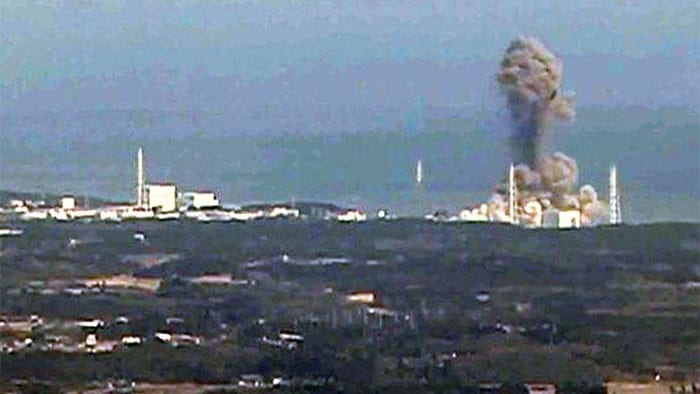
The earthquake knocked out power at Fukushima Dai-ichi and the tsunami flooded back-up generators, causing three of the six reactors to overheat and generating hydrogen gas that later exploded. Irradiated groundwater and cooling water flowed into the ocean, some collecting in beach sands and seafloor sediment, some building up in fish and other organisms, and the rest spreading with currents across the Pacific. (Fukushima Central Television)
The Fukushima Dai-ichi nuclear plant had systems in place to cope with an earthquake. When the violent shaking damaged utility lines and cut off the plant and its six reactors from the power grid, the three active reactors shut down automatically. But shutting off a nuclear reactor isn't as simple as turning off the lights.
"Even if the fission reaction stops, the radioactive material continues to generate heat," said Jota Kanda, a professor at Tokyo University of Marine Science and Technology who has led several research expeditions off the coast of Fukushima. "You have to keep cooling by water for quite a long period."
The facility switched over to its backup generators to continue pumping the water needed to cool the fuel rods. Then the tsunami hit.
The nuclear plant was constructed on a cliff which had been excavated down to 30 feet above the ocean. The maximum expected height of a tsunami in that area was around 20 feet, Kanda said. But the tsunami waves that hit that day measured between 37 and 50 feet high. They flooded the facility and destroyed the backup generators.
When the cooling systems failed, the temperatures in the reactor cores began to rise. The fuel rods inside the reactors started to overheat and melt, exposing the uranium fuel and damaging their containment vessels. At the same time, water in the reactors turned to steam and began reacting with the metal fuel rods, generating volatile hydrogen gas.
To relieve the pressure building up in the reactor cores, plant workers vented the gas several times over the next few days. This gas carried radioactive isotopes, also known as radionuclides, into the atmosphere, but this was not enough. Over following days, three hydrogen explosions at the plant sent even more radioactivity skyward, much of it eventually settling in the ocean.
Emergency crews desperately sprayed the overheating reactors with water cannons and firehoses, and military helicopters dropped hundreds of gallons of water from above. This water also picked up radionuclides and overflowed into the ocean or seeped into the ground, carrying those isotopes to the ocean.
A radioactive ocean
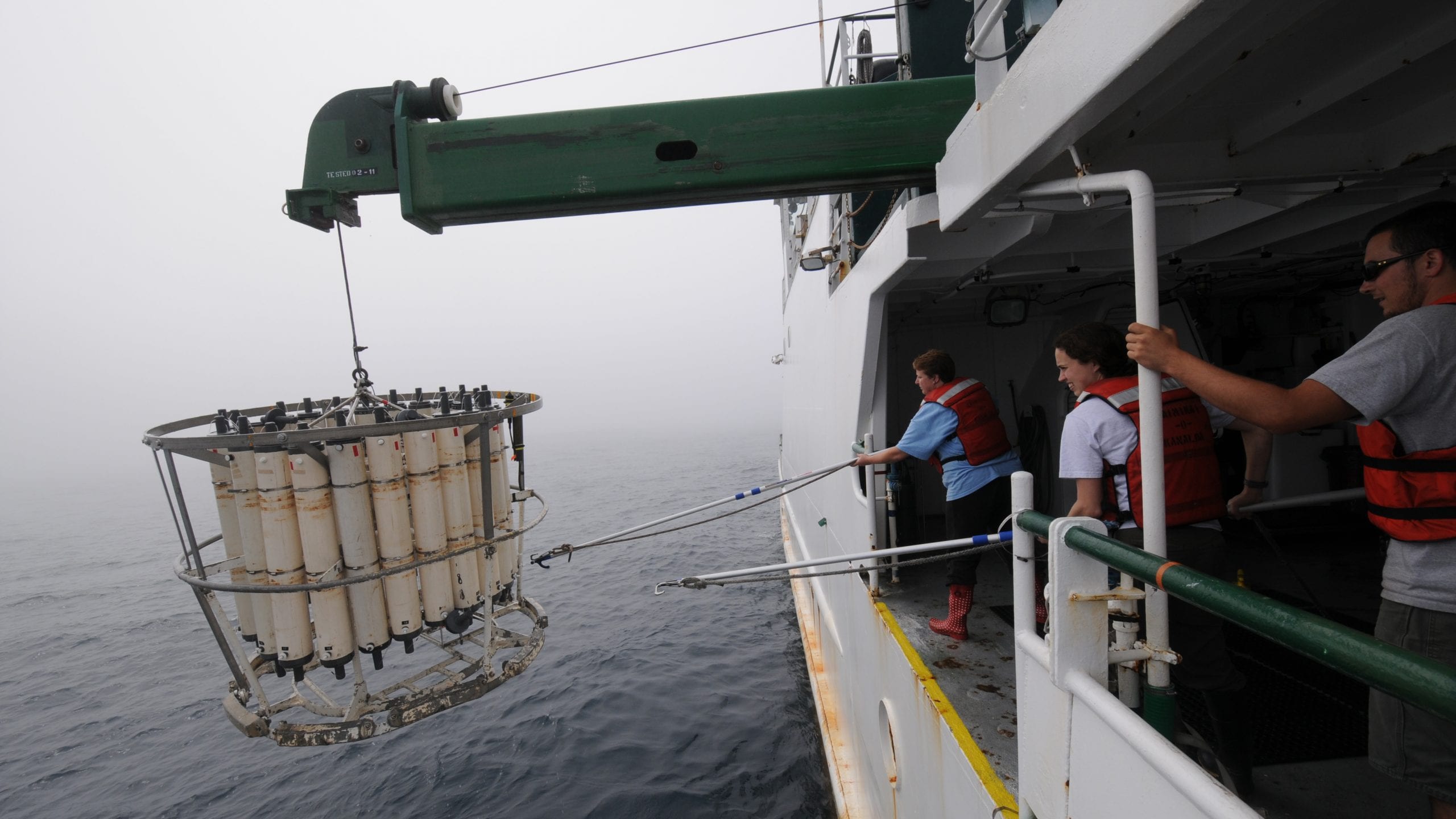
The first international research expedition in June 2011 traced the spread of radionuclides from the coast near Fukushima Dai-ichi to more than 300 miles offshore. Over the past decade, scientists, technicians, and members of the public have collected samples of water, sediment, and marine life from the ocean near the power plant to the West Coast of Canada and the U.S. (Photo by Ken Kostel, © Woods Hole Oceanographic Institution)
Some of the most abundant radionuclides released in the disaster were iodine-131, cesium-134 and cesium-137. All are potentially hazardous, but they decay at different rates. Most of the iodine-131 was gone in a matter of weeks. With a two-year half-life, only 3% of the cesium-134 remains after 10 years, making it a telltale, but rapidly diminishing, fingerprint of Fukushima's impact on the ocean. The cesium-137, which has a half-life of 30 years, will linger for decades. In fact, there is still a small but measurable amount of cesium-137 in oceans around the world from atmospheric nuclear weapons testing in the 1950s and '60s.
"Since the dawn of the nuclear era, we've always have some cesium; the question is how much more did this accident add," said Buesseler, who led a research trip to measure radiation near Fukushima in June 2011. "We saw extremely high levels-more than 50 million Becquerels per cubic meter-of this radioactive form of cesium in the ocean close to Fukushima Dai-ichi."
One Becquerel is a very small amount of radioactivity-it equates to one atomic nucleus decaying per second. The World Health Organization guidelines suggest that drinking water shouldn't contain more than 10,000 Becquerels per cubic meter of cesium-137. Prior to the disaster, the waters around Fukushima had about 2 Becquerels per cubic meter. That shot up to over 50,000,000 immediately after the accident, then quickly dropped in the months following as measures to stanch the flow of radionuclides from the plant were put into the effect. Some of the radioactivity accumulated in the seafloor sediments, but much of it was dispersed into the Pacific by the strong Kuroshio Current, sparking fears that ocean currents would carry cesium to North America.
To investigate the movement of Fukushima radionuclides across the Pacific, Buesseler organized a community-based effort to determine what the levels of cesium were on the West Coast. His lab received seawater samples from ships operating in the area, and from surfers and beachgoers up and down the coast. While they did find evidence that some of the radioactivity from Fukushima had been carried across the Pacific to North America, the levels were extremely low-less than 10 Becquerels per cubic meter.
"That's a very small number," Buesseler said. "If you swam in the ocean every day for a year in waters that were about 10 Becquerels per cubic meter, the dose, the additional exposure, would be about a thousand times less than a single dental X-ray. The risk isn't zero, but it's so small that I wouldn't be concerned about swimming, surfing or boating off the West Coast."
The radioactivity at Fukushima has not entirely dispersed, however. Leaks from the reactors, radioactive sediment in rivers, and contaminated groundwater continue to flow into the ocean, albeit in much smaller amounts than in the first few years after the disaster. Levels in the coastal waters near Fukushima have stayed around 100 Becquerels per cubic meter since 2016.
What about the fish?
The abrupt flood of radioactivity into the ocean was an immediate concern for local marine life, and a long-term concern for the people who consume it. The Japanese government immediately shut down fisheries and began an extensive monitoring and testing program to determine what seafood from the region, if any, would be safe to eat.
"Radionuclides that have been released into the ocean can be in either dissolved or particulate form," said Sabine Charmasson, senior expert at the Institute for Radiological Protection and Nuclear Safety in France. "Both can be taken up by marine organisms."
A fish living in a contaminated environment might absorb radionuclides through its skin or ingest them with its food or water, but how long they remain depends on the specific element. Cesium, for example, acts like its cousin on the periodic table, potassium, and is taken up by muscles and organs, where it can remain in the animal for weeks or months. Tritium, a radioactive form of hydrogen, behaves primarily like water and can be flushed out of an animal's system in a matter of days. Strontium is more akin to calcium, Charmasson said, and can linger in a creature's bones for years.
The particular animal species in question matters as well. An octopus will take up certain radionuclides differently than a sea urchin. A fish with a speedy metabolism might clear contamination more quickly.
Researchers found that animals living near the seafloor around Fukushima had higher levels of radioactivity, even as the contamination levels in the water began to fall.
"This is because these fish feed on prey living on or inside contaminated sediment," Charmasson said.
After a few years, however, the vast majority of seafood caught off the Northeast Coast of Japan, including the fisheries off Fukushima, was below Japan's strict radiation limit of 100 Becquerels per kilogram. (The U.S. limit is 1200 becquerels per kilogram.) Since 2015, out of thousands of fish that were tested, only two have exceeded that level.
A crisis of trust
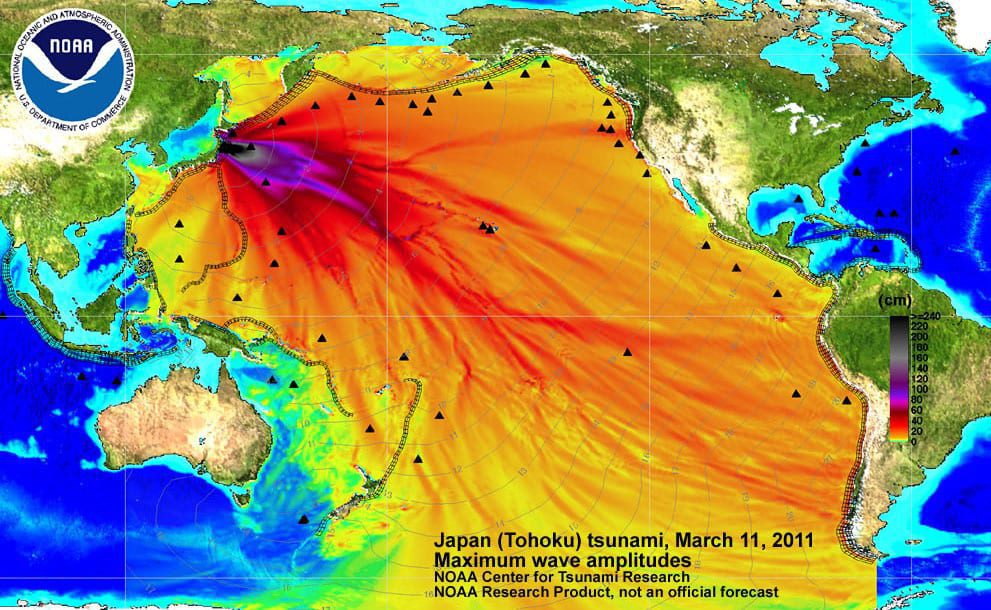
In the wake of the accidents at Fukushima Dai-ichi the spread of misinformation inflamed public distrust of information from scientists and government officials. One commonly shared fallacy was a map, supposedly showing the spread of radiation immediately after the meltdowns at Fukushima Dai-ichi, but that was actually a model of tsunami waves crossing the Pacific after the earthquake. (Image courtesy of NOAA Pacific Marine Environmental Lab)
Despite being demonstrably safe, the seafood from the Fukushima region still carries a stigma of contamination. Caroline Kennedy, who served as the U.S. ambassador to Japan from 2013 to 2017, recalled traveling to the region repeatedly to show that it was safe to visit and eat the local foods.
"You meet these people who are fishing and trying to grow food but everybody is scared to buy their food or their fish, understandably so in many cases," Kennedy said. "This whole episode is something that, as we piece apart, has many lessons for different areas of disaster response, as well as personal and collective responsibility and science."
Mistrust of information about Fukushima built in the days and weeks after the disaster, when people were desperate for answers to what seemed like simple questions: Where was the radioactivity traveling on land and in the ocean? Who needed to evacuate? What food was safe?
But communication from the government was messy, delayed, unclear, and incomplete said Azby Brown, lead researcher for Safecast, an environmental monitoring group formed in response to Fukushima. The first official map showing radiation contamination in the Tokyo area wasn't released until October 2011, seven months after the disaster. Rumors and disinformation spread faster and farther than any official communication, adding to the confusion.
"Trust is not a renewable resource," Brown said. "Once you lose it, you may never get it back."
Before the Fukushima disaster, the Japanese limit for radioactivity in fish was 500 Becquerels per kilogram, already stricter than the international standard. In April 2012, in an in an attempt to build public confidence in the safety of Fukushima seafood, the limit was lowered to 100 Becquerels per kilogram. But the lack of clear communication around this change created more confusion and anxiety for many people. Had they previously been eating seafood that was unsafe?
"If you don't think about who it's for, how they're likely to react, how they're going to find this information, then the information may miss the target," Brown said. "We have to anticipate the potential failure points and how things can be misunderstood."
Many people lost faith in official sources of information early on in the disaster and continued missteps, as well as misrepresentation of some information, have compounded the problem, creating a crisis of trust around Fukushima.
Fukushima's ongoing legacy
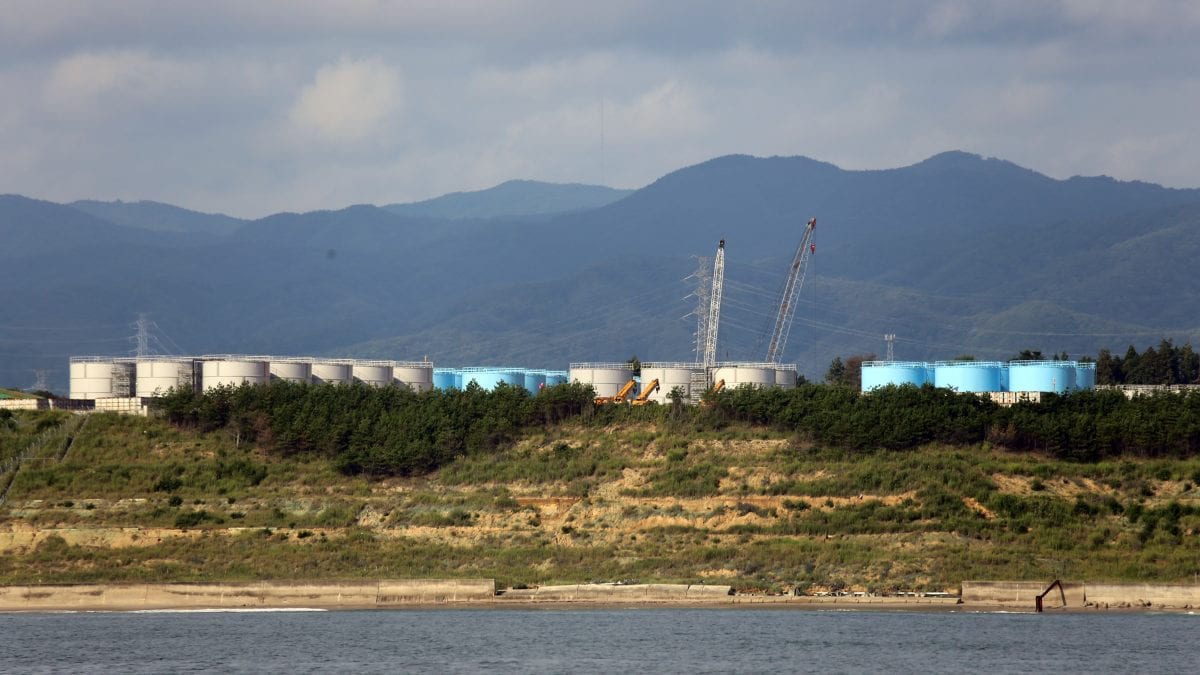
One of the enduring legacies of events that began on March 11, 2011, is the more than 1,000 storage tanks on the grounds of the Fukushima Dai-ichi nuclear power plant holding contaminated wastewater that the Japanese government wants to empty into the ocean. Exactly what that water is contaminated with remains unclear. (Photo by Ken Buesseler, © Woods Hole Oceanographic Institution)
In addition to changing the landscape of Tohoku, the disaster fundamentally changed the attitudes of of the Japanese people. In the aftermath, there was a renewed (some would say a new) sense of volunteerism and philanthropy in Japan. Atsuko Toko Fish, trustee of the Fish Family Foundation and co-founder of the Japanese Women's Leadership Initiative, went to Tohoku just three weeks after the earthquake and tsunami to lend a hand and to distribute funds that she'd helped raise from her home in Boston. Japanese society has traditionally been resistant to outside help, whether it came from outside the country or even outside one's family, so she knew that her help would only be accepted if the people trusted her. She spent months traveling back and forth between Boston and Tohoku, sometimes hitching rides on cargo trucks to get to the disaster-struck region-anything to prove that her motivations came from a sincere desire to help.
Her efforts, and those of many others, form the basis of something Fish calls "trust-based philanthropy." In particular, she points to the role women have played in providing aid by focusing on building trust, which has had the added impact of giving new momentum to women's rights in Japan.
"These women will shoulder the future of Tohoku," said Fish. "They will be important future leaders of Japan, as well." And their leadership will be needed, as there is still work to be done.
Today, the Fukushima Dai-ichi site is crowded with more than 1,000 towering storage tanks. They are filled with contaminated groundwater and cooling water that came into contact with the radioactive cores and debris. Currently, the wastewater is accumulating at a rate of more than 100 tons each day. The tanks were originally intended to be temporary, but they have become one of the more visible, and potentially long-lasting legacies of events that began ten years ago. The site will run out of space to store water by 2022, according to the Tokyo Electric Power Company (TEPCO), which owns the plant. The stored water has undergone a decontamination process, and the current plan is to slowly release it into the ocean.
But the decontamination process is not perfect, and a lack of transparency from TEPCO and the government has caused a public backlash against the plan, Brown said. TEPCO insisted for years that there was only tritium left in the tanks, a radioactive form of hydrogen that is difficult to remove but poses a lower health risk than other radionuclides. Only in October 2018 did the company finally admit that the water still contained additional contaminants.
These other radionuclides are more dangerous to human health, Buesseler said, and are more likely to remain on the seafloor and accumulate in marine life. "A little transparency would have gone a long way to make us accept and build a solution around not just tritium, but the other isotopes."
The first step is to get a full accounting of what is in the tanks. Then, says Buesseler, TEPCO needs to demonstrate that they can remove the additional radionuclides, which they admit is needed for more than 70 percent of the tanks. Finally, independent monitoring of the ocean is needed to ensure that they only release what is permitted and at allowable rates. Buesseler also raised the possibility of building more tanks in the surrounding area-there is a 12-mile exclusion zone around the plant-to allow some of the shorter-lived contaminants to decay. But there are concerns that another large earthquake could fracture the tanks and cause uncontrolled leaks.
Whatever the solution, fully decommissioning and decontaminating the site will be a decades-long project. And as the marine ecosystem rebounds and communities in the area continue to rebuild, Buesseler knows the question of "is it safe?" will probably never go away.
"Even as levels get lower, the public will still have these questions," Buesseler said. "And what I hope in ten years is that we're still trying to give them answers."
